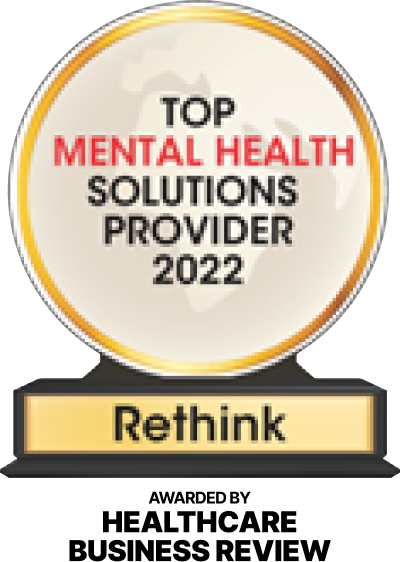Industry leading companies share a powerful commonality, a skilled and driven labor force. Creating, growing, and guiding an organization that shapes landscapes requires dependable and knowledgeable employees that are attracted, developed, and maintained sustainably – an increasingly difficult task for talent management professionals.
Prioritizing the integration of behavioral health best practices into organizational talent management strategies will be the defining factor between companies that fill open roles, keep employees, and grow their potential versus those that perpetually struggle with staffing and employee development.
A staggering one in five workers plan to quit their jobs in 2022, perpetuating the war for talent and slowing organizational growth as resources are pulled to recruiting and the average employment term decreases. Employee tenure is directly tied to company growth as experienced employees make better judgement calls, complete tasks faster, and are more committed to the advancement of the business. Successful talent management is crucial to retention, and thus enterprise growth.
One in five workers plan to quit their jobs in 2022
The key to improving every stage of the employment journey lies in adopting an innovative and analytical approach to workforce behavioral health, both as a well-being benefit and a cultural expectation.
Behavioral Benefits Build Better Workforces
Organizations that prioritize the adoption, implementation, and development of behavioral well-being benefits are seeing the returns in their recruiting, retention, and development outcomes. With six out of ten employees reporting that well-being benefits are a top priority when applying for jobs, recruiters count a full-service behavioral health platform fulfilling the financial, mental, social, physical, and career well-being needs of employees as a must-have, not a nice to have.
That’s why nearly 50% of Forbes Future of Work organizations are offering expanded wellbeing benefits with leadership training, meditation, and counseling as part of their push to attract and retain the best talent to fuel their growth.
This trend is industry-agnostic, with Gallup finding that K-12 teachers have the highest burn out rate of workers in any industry for 2022. A recent RethinkEd study showed that educators utilizing behavioral wellness professional development content reported significantly less stress and burnout than educators that did not, with the utilization of the solution having an outsized impact on its effectiveness. This highlights three pillars of pivotal importance where it concerns behavioral health benefits solutions – they must be easy to use, provide utilization data, and build on effective expert content.
Pillar 1: Easy to Use
Introducing a behavioral wellness benefit within an organization could look like rolling out a gym membership, counseling program, or a full parenting, personal, and professional content suite like RethinkCare. Regardless of the wellness programs scope, its success will be tied to its ease of use.
Employee utilization of benefits depends more on their implementation than any other factor – getting this right sets the groundwork for maximizing the benefits overall impact. Implementation checklists should include measurable success metrics for each stage of the project, identification of key internal team members, and a calendar laying out all communications with employees about the launch of the benefit and how to access it, including post launch follow-ups.
Pillar 2: Provide Utilization Data
Once a behavioral health benefit has been successfully rolled out, the next step becomes measuring its effectiveness. Not all well-being programs will provide the ability to track employee utilization, but without it there is no way to gauge ROI. Important insights to look for in the utilization reporting capabilities of behavioral health software include registrations, engaged time, sessions per user, monthly activity, satisfaction data, top areas of use, and a built in ROI calculator.
Pillar 3: Effective Content
It’s no secret that well-being benefits have become a crowded space. With the market now worth $20.4 Billion in the U.S., there are no guarantees that every service, software, or partnership on offer is backed by well researched, expert-approved content guaranteed to generate results. When HR leaders compare well-being benefits, they look for options backed by scientific advisory boards with studies that prove the content’s effectiveness and a guarantee that the experts involved are well-regarded within their respective areas of study.
Fully vet any behavioral health software you consider by reading user and buyer testimonials, case studies, and having multiple decision makers within an organization demo the product.
Retain & Develop with Culture
As teams grow and workflows change, cultural frameworks become the operating system on which organizational progress is made. A company’s cultural framework consists of its traditions, values, and leadership style, and the intentionality with which those three variables are fostered is the tipping point for many companies’ ability to retain and develop the competitive talent that they’ve invested so heavily in attaining.
Integrating behavioral health best practices into company culture requires insight and understanding as to what enables health and happiness at a basic human level. Crucial topics to prioritize include resilience training, the link between mental and physical well-being, and the importance of a healthy work-life balance. These topics can be integrated into the three parts of a cultural framework alongside the deployment of a behavioral health benefits solution, or independently.
Traditions
Having company-wide traditions is a powerful way to show employees that they are a part of a community that does things together. RethinkFirst started celebrating Halloween with an office costume party back in 2009, but now celebrates with a virtual costume competition garnering participation from 400+ remote employees. These traditions lend character and provide happiness and satisfaction to employees as they form connections with each other and with the company as a whole.
Values
Company values serve to support the corporate mission and provide a common purpose to all employees. When companies lack values there is often misalignment on goals, intentions, and outcomes, even between members of leadership. Organizational values also help employees in determining what acceptable behaviors are, how to receive and give feedback, and can set the tone for employee and customer interactions.
Leadership Style
Transformational leaders are highly sought-after innovators that motivate and inspire their employees to work not only for their personal success but the continued progress of the company as a whole. Transformational leadership is built on four primary elements, individual consideration, inspirational motivation, idealized influence, and intellectual stimulation. These boil down to listening to employee concerns, motivating based on a unified vision, modeling ethical behavior, and challenging assumptions while taking calculated risks.
Any leadership style, transformational or otherwise, needs to take into consideration these core elements and learn to use them as a tool to build resiliency, prioritize well-being, and teach healthy habits for achieving work-life balance.
Every desirable employee is in search of something unique to their talents and needs, but their wants all link back to a simple concept: to be a healthy employee, to be a high performer, to have an impact and add value through their work, to care for themselves and their family, and to grow as a person.
Daniel Etra Tweet this
The Future of Talent Management
Talent management is trying to keep up with a shifting employment landscape fraught with high demand for workers possessing emotional intelligence, technical skills that feed innovation and growth, and candidates seeking to be shaped into experts and leaders in their own right.
Every desirable employee is in search of something unique to their talents and needs, but their wants all link back to a simple concept: to be a healthy employee, to be a high performer, to have an impact and add value through their work, to care for themselves and their family, and to grow as a person.
Structuring corporate benefits and culture around providing for these basic behavioral health needs is the future of talent management and the key to leading an organization that will thrive alongside and because of its employees, not stall while trying to fix an archaic recruitment and retention strategy.










